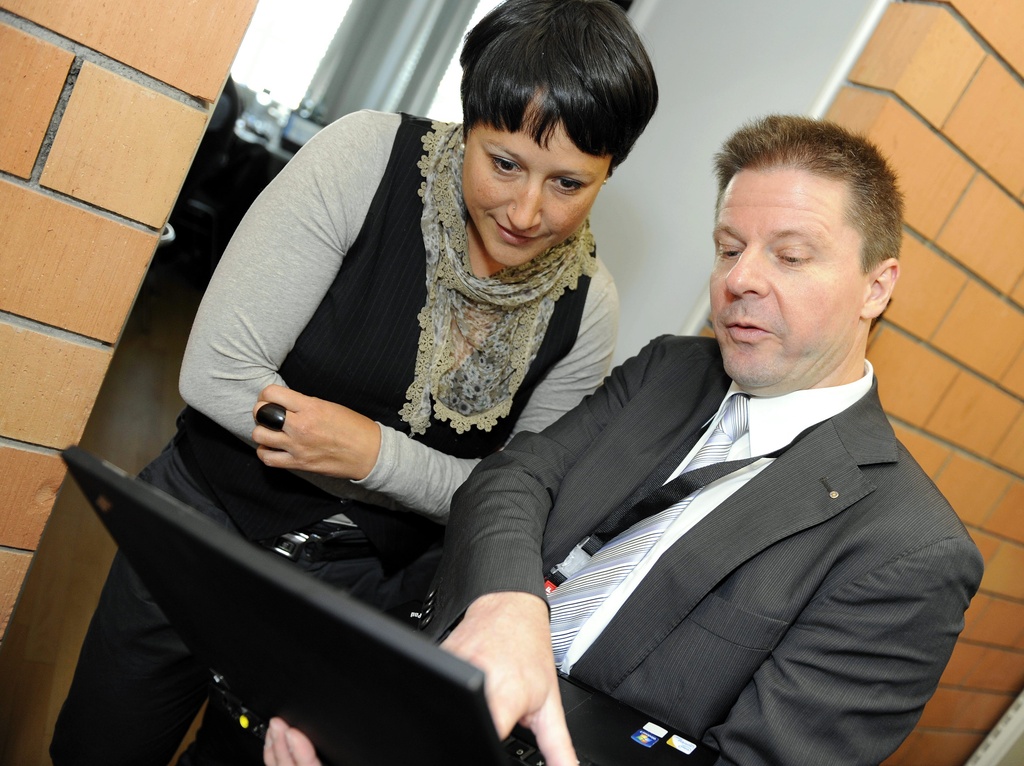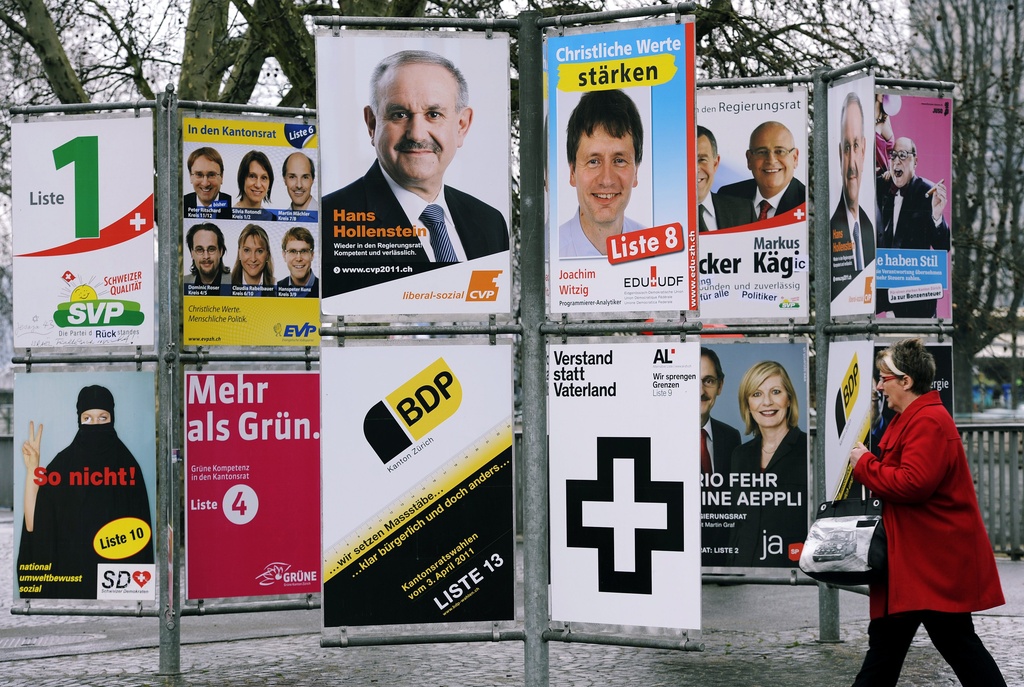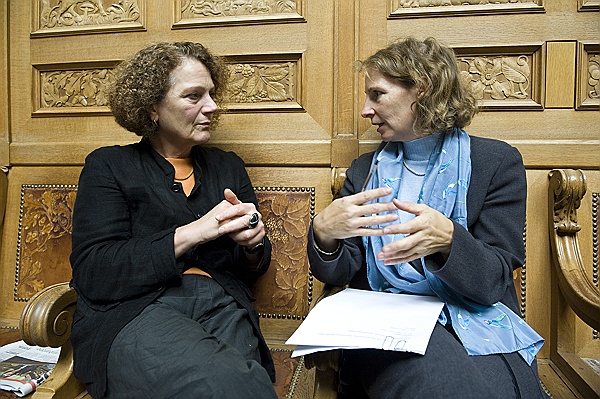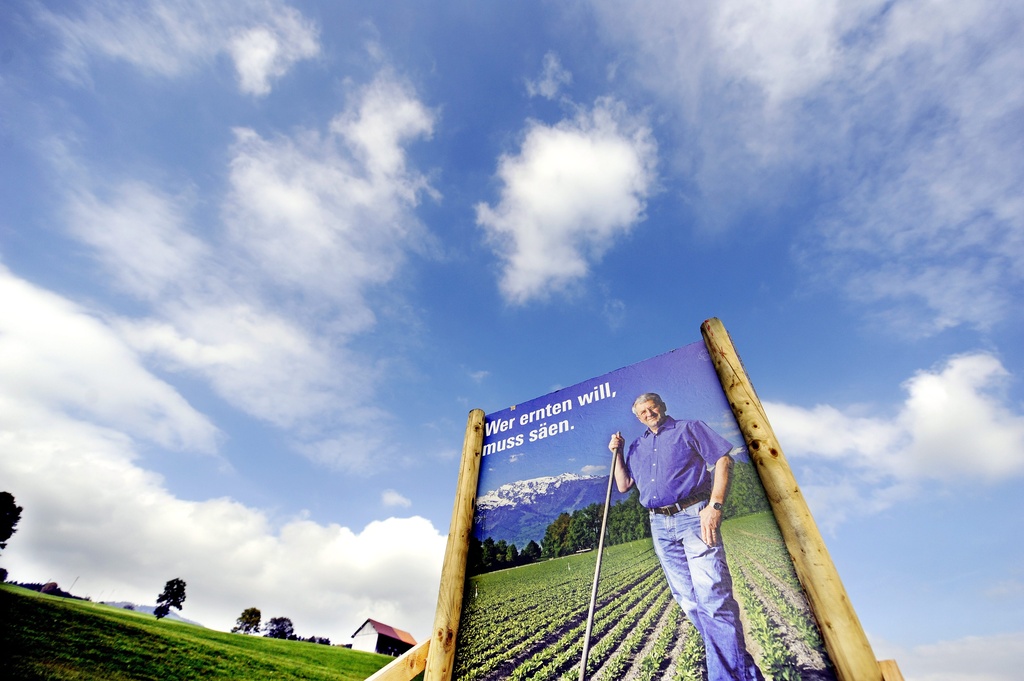New centre parties rein in right and left

Two small centre parties - the Conservative Democrats and the Liberal Greens - look set to be the winners of Sunday's parliamentary elections.
The rightwing Swiss People’s Party as well as the centre-right and the centre-left parties appear to have lost between 1.4 per cent and 3.9 of their vote in the House of Representatives compared with the 2007 elections.
A nationwide projection, commissioned by the Swiss Broadcasting Corporation, shows the Conservative Democrats gaining 5.2 per cent and the Liberal Greens winning an additional 3.9 per cent compared with four years ago. They could both win up to nine new seats each.
The two traditional centre-right parties, the Radicals and the Christian Democrats, are more than two per cent down.
Meanwhile, two parties at opposite ends of the political spectrum, the People’s Party and the Greens, have suffered massive setbacks and will lose up to seven seats each in the House, according to projections.
The Conservative Democrats were founded by moderate members of the People’s Party in 2008, while the Liberal Greens split off from the Green Party in Zurich in 2004.
Final results are due early on Monday.
“The Liberal Greens have gone into competition with the Greens, while the Conservative Democrats won at the expense of the centre-right and the rightwing,” political scientist Claude Longchamp said.
His colleague Georg Lutz added that the fragmented centre-right camp could make it more difficult for parliament to find agreement.
Senate
Only about half the seats in elections to the Senate have been declared in the first round of voting.
The Radicals and the Christian Democrats, which have dominated the Senate in the past, both secured seven seats as did the Social Democrats.
The People’s Party have so far won four seats. It is not clear whether the Greens and the Liberal Greens will still be represented in the Senate.
Run-off elections for the Senate will take place next month.
Turnout is reported to have been around 48 per cent, unchanged since 2007. Most voters sent in their ballot by post. Around 21,000 of the total 5.1 million citizens could participate in a trial with electronic voting.

More
House of Representatives
Campaign
The election campaign in the run-up to Sunday was seen as rather low-key with no single party or personality taking centre stage for long.
Political experts say four distinct phases marked the campaign since the beginning of the year, giving no group a decisive advantage.
While it was immigration at the beginning, the nuclear disaster in Japan and the impact of the strong Swiss franc for the Swiss economy set the tone later, before discussions over the future make-up of the seven-member cabinet appeared to win the upper hand.
Parliament is due to confirm the cabinet members for a four-year term in December. The People’s Party has claimed a second seat in the cabinet, while the Conservative Democrats and the Radicals are trying to defend their seats.
Of the seven cabinet members, only Foreign Minister Micheline Calmy-Rey, a member of the Social Democratic Party, has announced she plans to step down.
Under an informal rule, the major Swiss parties share out their seats in cabinet according to their political strength in parliament.

More
Government, ministers, president
A record 3,458 candidates competed for the 200 seats in the House of Representatives and 44 of 46 Senate seats.
About 5.1 million citizens, including more than 700,000 Swiss expatriates, were eligible to vote.
About 21,000 registered Swiss expatriates could cast their ballot online in ongoing trials with e-voting.
Turnout was expected to be around 49%. Most votes are cast by post.
Elections take place every four years in the second half of October.
The new parliament will choose the seven-member cabinet on December 14.
A total of 12 parties currently sit in parliament and five of them are represented in the cabinet.
The rightwing Swiss People’s Party is the biggest group in the House of Representatives.
The centre-left Social Democrats are the second biggest group.
The centre-right Radicals and the Christian Democrats dominate the Senate.
The Greens are the biggest non-governmental party.
The Liberal Greens and the Conservative Democrats – who split off from the People’s Party in 2008 – are two relatively new groups at the political centre.

In compliance with the JTI standards
More: SWI swissinfo.ch certified by the Journalism Trust Initiative





You can find an overview of ongoing debates with our journalists here . Please join us!
If you want to start a conversation about a topic raised in this article or want to report factual errors, email us at english@swissinfo.ch.